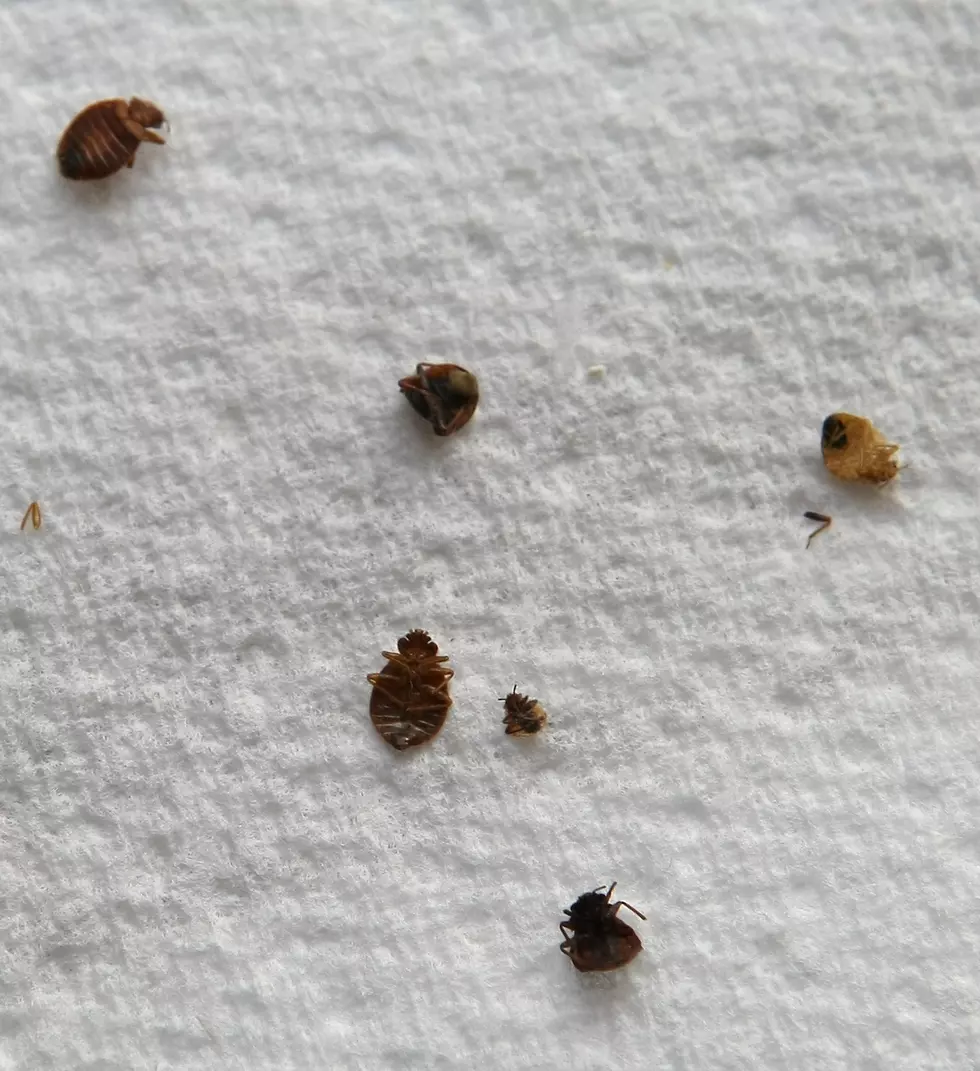![Bedbug Infestations to Grow This Year [AUDIO]](http://townsquare.media/site/385/files/2014/03/86301744.jpg?w=980&q=75)
Bedbug Infestations to Grow This Year [AUDIO]
We haven't heard much about bedbugs in recent months, but last year the National Pest Management Association confirmed 98 percent of pest management professionals had encountered a bedbug infestation, an increase from 90 percent in 2011. This year, they expect that number to go even higher.
The bedbug plague was first noticed and reported in 2004, and made national news in 2010 when it seemed as if the pests were showing up everywhere.
"There is no place where humans live or work that is immune to a bedbug infestation," says Leonard Douglen, executive director of the New Jersey Pest Management Association. "This problem has now spread to all 50 states since they became a significant pest problem as the new century began, invading homes, apartments, dormitories, hotels, and just about anywhere humans lie down to sleep. Bedbugs can detect a body in the room or in one nearby."
In New Jersey, Douglen estimates that bedbug-related calls have increased 80 to 90 percent since 2000.
"It's common to see a resurgence of bedbugs in the summer when people are traveling," Douglen said. "The problem with bedbugs is that they are the hardest to control -- it's not a simple call or a chemical treatment. We don't have a silver bullet that works that well on them; it requires a number of more sophisticated treatments. Only a professional pest management firm has the knowledge and the EPA-approved pesticides to rid a home or other structure of bedbugs, and it usually takes several trips to do it."
Years ago when we read about bedbugs, they were localized to a bed. Today, when people get bitten by bedbugs, those people may then move to the living room. In doing so, they bring the pests with them, and that creates a wider area that needs treatment.
Bedbugs can live for more than a year without eating and can withstand a wide range of temperatures, from nearly freezing to almost 113 degrees Fahrenheit. This increases the difficulty of eliminating them.
Female bedbugs lay from 200 to 500 eggs, attaching them with a glue-like substance. They hatch in about 10 days. Though they do not grow larger than a small seed, they go through five nymph stages, each of which requires a single blood meal before molting. They can suck up to six times their weight and feeding takes from three to 10 minutes. Bedbugs produce three to four generations within a year's time.
When traveling, Douglen recommends bringing a large plastic bag in which you can store your suitcase at night, to prevent bugs from crawling into it. Check bed linens in the morning for blood spots, which is a telltale sign of bedbug infestation.
For more information on bedbugs, visit www.njpma.com.
More From New Jersey 101.5 FM

![Younger, Male Drivers Paying More for Insurance [AUDIO]](http://townsquare.media/site/385/files/2014/04/RS4630_91719642-scr-300x200.jpg?w=980&q=75)
![Kids Driving You Crazy? You’re Not Alone [POLL/AUDIO]](http://townsquare.media/site/385/files/2014/03/RS2966_106456110.jpg?w=980&q=75)
![How Long Could You Last Financially Without Work? [AUDIO]](http://townsquare.media/site/385/files/2014/03/RS2403_149136925.jpg?w=980&q=75)

![Latest Reports: Slow But Improving Job Growth [AUDIO]](http://townsquare.media/site/385/files/2014/01/147883227.jpg?w=980&q=75)

![Rearview Cams to be Mandatory by 2018 [AUDIO]](http://townsquare.media/site/385/files/2014/03/rear-view.jpg?w=980&q=75)

